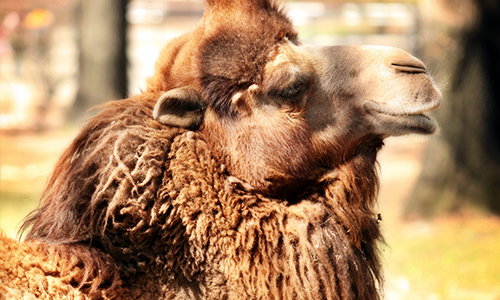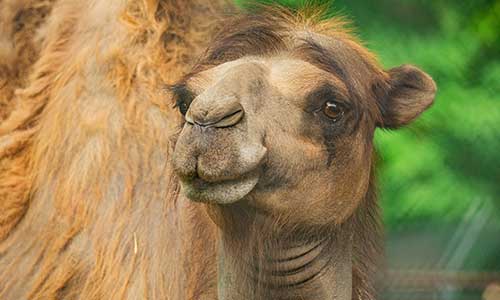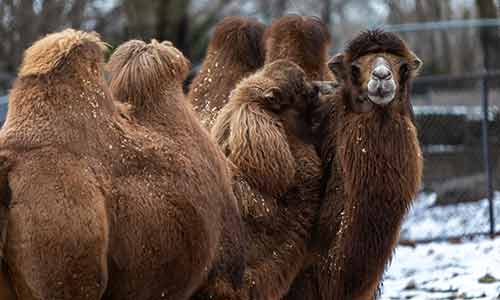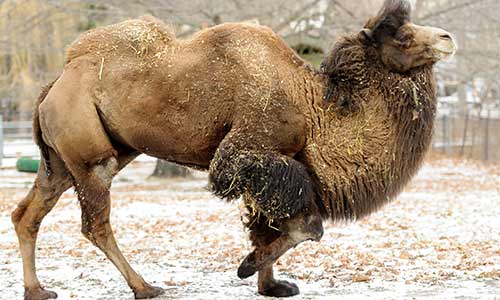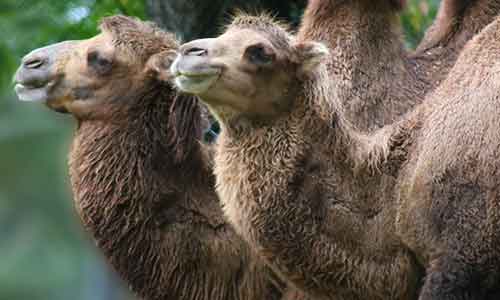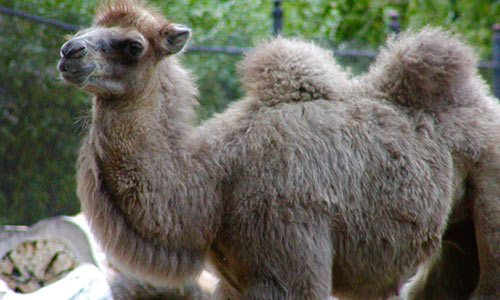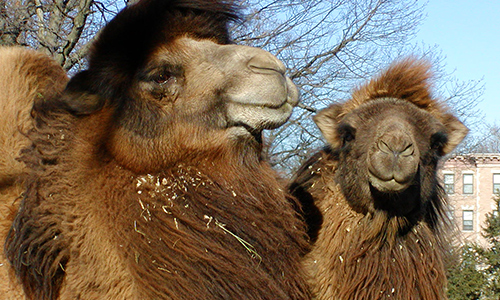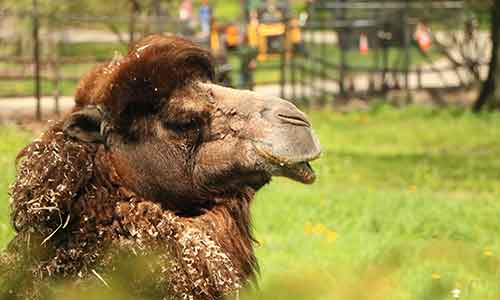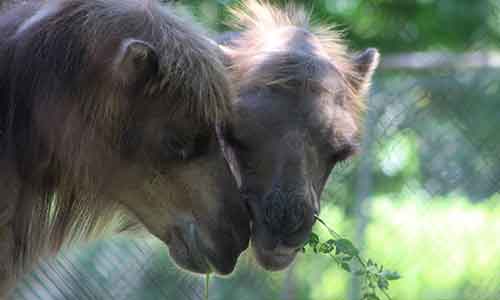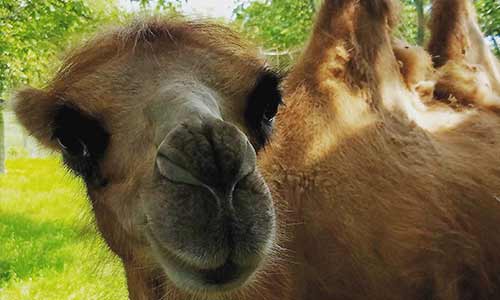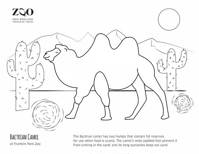Bactrian Camel
Camelus bactrianus
About the Bactrian Camel
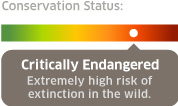
Geographic Range:

Class: Mammalia
Order: Artiodactyla
Family: Camelidae
Genus: Camelus
Species: Camelus bactrianus
The Bactrian camel has two humps that contain fat reserves for use when food is scarce. It has many characteristics that help it survive in a desert habitat, including wide padded feet to prevent it from sinking in the sand and long eyelashes to keep out sand. Its milk is more nutritious than a cow’s and its feces are so dry they can be used to fuel fires immediately after being expelled from the body.
Bactrian Camel Facts
Appearance:
The Bactrian camel is an even-toed ungulate (hoofed mammal). It has a somewhat triangular face and a split upper lip. Long legs keep its body far from the hot ground during the day, but at night it can lie down to stay warm. Camels’ thick woolly winter coat sheds in clumps as the weather warms in the spring, and their skin is black to prevent sunburn. Their two humps contain fat reserves, not water, and camels draw upon these reserves when food is scarce. Bactrian camels have no upper incisors, just a hard palate, and their sharp canines are used in fighting. Bactrian camels are stockier and hardier than the Dromedary.
The camel is amazingly adept at dealing with sand and difficult terrain. Its long eyelashes and ear hairs help to block blowing sand, and camels can seal their nostrils to keep sand out. Its wide padded feet act as snowshoes, preventing them from sinking in the sand.
Size:
Weight: 1,600 pounds
Height: 7 feet tall at the hump
Diet:
In the wild: leaves, grasses and shrubs, including very tough, prickly or thorny plants that other herbivores cannot eat. Camels will eat plants that are dry, salty and/or bitter. The first time food is swallowed, it's not fully chewed. The partly masticated food (called cud) goes into the camel's stomach and is later brought back up for further chewing.
Reproduction:
Camel birthing peaks between March and April, after a gestation period of 12 to 14 months. The baby is weaned at one to two years. Females reach sexual maturity at 3 to 4 years and males at 5 to 6 years.
Behavior:
These camels live in groups of six to 30 females and one male, or they’re solitary. Domestic camels travel in caravans across the desert, with an adult male acting as the leader of the group. They maintain a constant speed by pacing, which consists of two legs on the same side of the camels' body moving at once, which creates a rolling motion and shifts their weight side to side (much like a giraffe). Camels can run at speeds of 10 to 20 miles per hour.
Habitat/Range:
The Gobi Desert in Mongolia and China. Historically, this camel has occupied a range throughout these two regions, but they're now found only in isolated areas.
Median Life expectancy:
17.8 years
Predators:
None known
Fun facts:
- As pack animals, camels are virtually unsurpassed. They're able to carry 375-600 pounds at a rate of 29 miles per day.
- Camels can drink over 30 gallons of water at once. They can live six to seven months without water if they have food from which to get moisture. Without food or water, at 86-95 degrees Fahrenheit, they can live 10 to 15 days.
- The camel’s urine is extremely condensed; it's a gel-like, viscous liquid.
- Camels' feces are so dry, they can be used as fuel for fires immediately after being expelled from the body.
- In the 1800s, the U.S. Army had a camel corps based in California. Seemingly they trekked supplies from Arizona to Los Angeles but were based at Camp Verde in Texas. They used both kinds of camel, Bactrian and dromedary.
You Can Find This Animal in the Kalahari Kingdom
Camel Chat
Join us daily at 11:00 a.m. for a Camel Chat!
One hump or two?
How to remember Dromedary vs. Bactrian?
Turn the first letters on their side and they look like the humps of the camels: Dromedary (D) has one hump, and Bactrian (B) has two!
You might also like
At Franklin Park Zoo:
At Stone Zoo:

